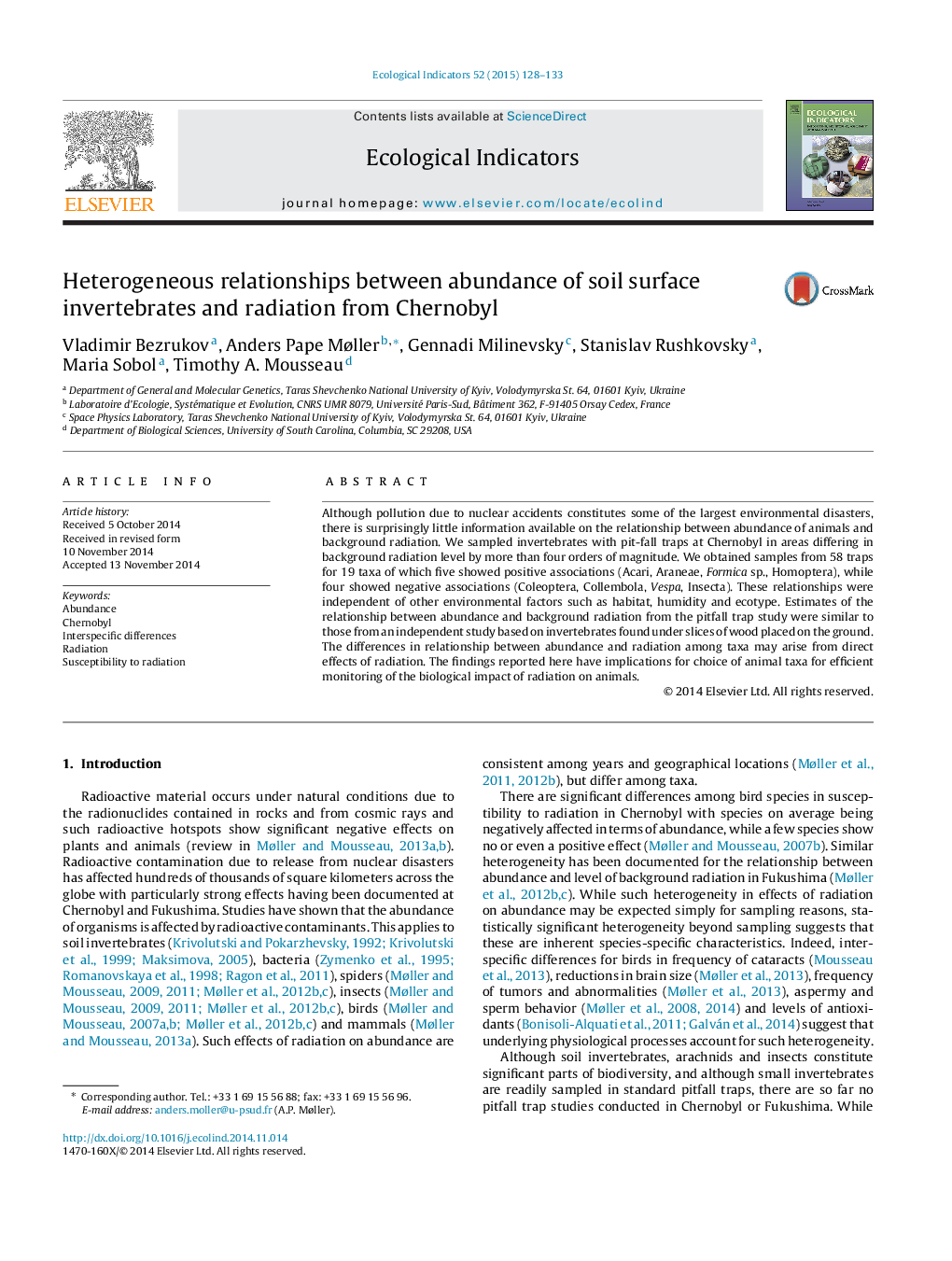| Article ID | Journal | Published Year | Pages | File Type |
|---|---|---|---|---|
| 6294513 | Ecological Indicators | 2015 | 6 Pages |
Abstract
Although pollution due to nuclear accidents constitutes some of the largest environmental disasters, there is surprisingly little information available on the relationship between abundance of animals and background radiation. We sampled invertebrates with pit-fall traps at Chernobyl in areas differing in background radiation level by more than four orders of magnitude. We obtained samples from 58 traps for 19 taxa of which five showed positive associations (Acari, Araneae, Formica sp., Homoptera), while four showed negative associations (Coleoptera, Collembola, Vespa, Insecta). These relationships were independent of other environmental factors such as habitat, humidity and ecotype. Estimates of the relationship between abundance and background radiation from the pitfall trap study were similar to those from an independent study based on invertebrates found under slices of wood placed on the ground. The differences in relationship between abundance and radiation among taxa may arise from direct effects of radiation. The findings reported here have implications for choice of animal taxa for efficient monitoring of the biological impact of radiation on animals.
Related Topics
Life Sciences
Agricultural and Biological Sciences
Ecology, Evolution, Behavior and Systematics
Authors
Vladimir Bezrukov, Anders Pape Møller, Gennadi Milinevsky, Stanislav Rushkovsky, Maria Sobol, Timothy A. Mousseau,
